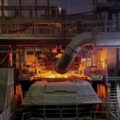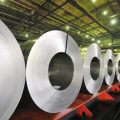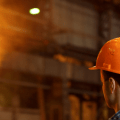The production of the world’s most widely used metal, steel, amounts to almost two billion tons each year. This represents 8% of total global carbon dioxide emissions. This information comes from the report Green Steel Production: How G7 Countries Can Change the Global Landscape, which also points out that to reduce these emissions, steel can be recycled. And your authors mention that of the steel produced globally, for example, 22% was made by remelting scrap with arc furnaces (EAF) in 2019.
The problem is that recycled steel tends to be of lower quality due to poor sorting, which also leads to contamination problems. Currently, according to the publication, major innovations are being made to overcome these barriers.
The Green Steel Tracker points out that steel production is changing. This having detected public announcements of low-carbon investments in the steel industry. The Tracker presents 47 projects in 17 countries that use different decarbonisation technologies and are at different stages of the innovation process.
“We need to change the way we produce steel. Alternative technologies have been developed in recent decades. Natural gas and hydrogen can be used for direct reduction of iron ore, DRI-EAF. Companies and innovators around the world are researching electrolysis technology and testing carbon dioxide capture in pilot and demonstration projects. A major effort is being made to improve the recyclability of steel. However, these technologies have not yet changed the industry. In fact, global steel production is still as emission-intensive as it was 20 years ago.
In the report, the authors discuss the concept of green steel production and analyse what the G7 can do to help decarbonise the steel industry, otherwise it is difficult to see countries meeting the commitments made in the Paris Agreement: emissions from steel production must fall significantly for the industry to achieve net zero emissions by 2050.
“A race to be the world’s leading green steel producer is expected. To that end, current decarbonisation strategies and targets, as set out in the European Union (EU) Green Deal, South Korea’s commitment to climate neutrality by 2050, China’s commitment to net zero emissions by 2060, and the United States’ recently proclaimed 2030 climate target of reducing emissions by 50-52%; all should serve as wake-up calls for the steel industry and help accelerate the transition process.”
How can the G7 lay the groundwork for a global transition?
- Coordinate policies to create markets for green steel.
- Think globally, as green steel is traded internationally.
- Coordinate efforts to pool and increase investment in research and development.
- Enabling Transition Funding












